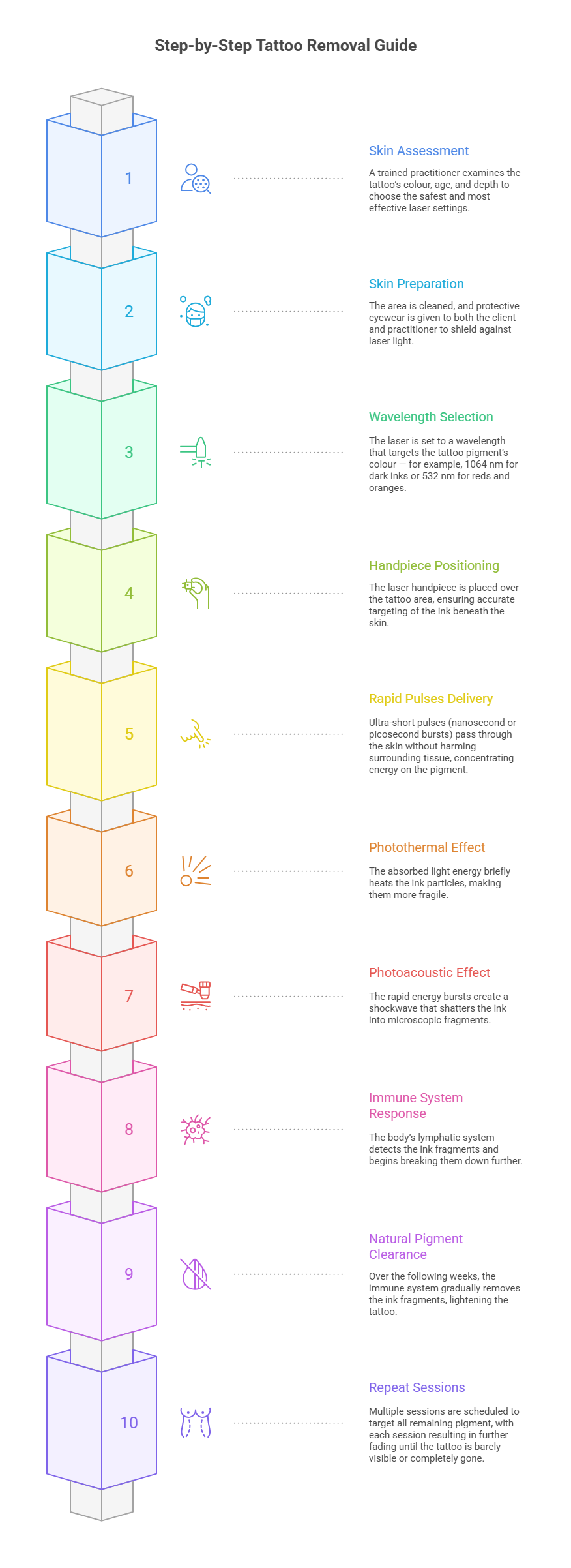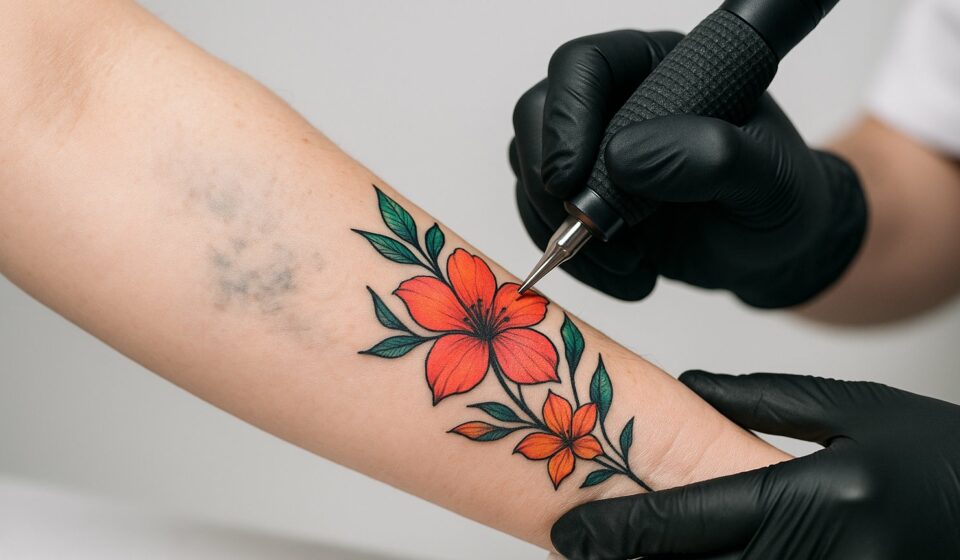Yes, you can tattoo over skin that has had laser tattoo removal, as long as the area is fully healed and properly assessed. The key is timing, texture, and a plan agreed by both your laser specialist and your tattoo artist.
Table Of Content
The short version
- Wait time: Most people should wait 8 to 12 weeks after the final laser session. Some cases benefit from 3 to 6 months for deeper dermal repair.
- Green flags: No redness, swelling, blisters, hot skin, or tenderness. Texture looks smooth, colour is stable, and the area tolerates gentle stretch without discomfort.
- Cover up strategy: Many artists prefer partial fade rather than total clearance, since a lighter base gives you more design options with less ink density.
01. Why timing matters
Laser removal works through selective photothermolysis and photoacoustic effects which break pigment into smaller particles for immune clearance. The biology keeps working beneath the surface for weeks after your final session. Give the dermis time to remodel and settle. Peer reviewed work in JAMA Dermatology describes these mechanisms clearly, and NHS services describe a low scarring risk when protocols are followed, see the Bristol Laser Centre.
02. Readiness checklist
- Skin status: No active irritation, no weeping, no scabs. Pigment changes have stabilised.
- Texture: Minimal raised or indented areas. If there is scarring, discuss design placement to disguise it.
- Sensation: Normal sensitivity on light touch. No lingering sting or heat after exercise or showers.
- Patch test: Ask your artist to place a tiny line or dot. Review after two to four weeks for ink hold and healing quality.
03. Typical timelines
| Scenario | Typical wait | Notes |
|---|---|---|
| Partial fade for cover up | 8 to 12 weeks | Common approach. Lets the new design sit cleanly with less ink density. |
| Full clearance, sensitive skin | 3 to 6 months | Extra time supports dermal remodelling and steadier pigment tone. |
| Texture or minor scarring present | Discuss case by case | Artist may re position elements or use shading to mask texture. |
04. Design and technique tips
- Bolder beats delicate: Fine line or watercolour styles can highlight tiny texture changes. Solid lines and planned shading hide more.
- Flow with the fade: Use remaining negative space to your advantage. Your artist can weave lighter areas into the concept.
- Placement tweaks: Shift focal points away from any visible scar. Build gradients over the tougher patches.
05. Risks to discuss
- Ink uptake: Previously lasered skin may hold pigment a little differently. This is where a patch test helps.
- Pigment shift: Temporary lightening or darkening can happen after laser, especially in darker skin. NHS services outline this on the NHS page.
- Sensitivity: Expect slightly heightened tenderness for the first new tattoo session on that site.
Working with professionals
Teamwork gives the best result. Speak with your laser clinic and your artist before you book. Ask for a readiness check, then a tiny test mark. For clinics looking to offer reliable fading for future cover ups, our Nu Tatouage Plus provides powerful Q switched Nd:YAG performance at 1064 and 532 nanometres, with low running costs and rapid UK support.

06. Practical next steps
- Book an assessment: If you run a clinic, you can book a demo of the Nu Tatouage Plus in our Coventry showroom.
- Plan your fade: Decide on partial lightening or total clearance with your specialist. Read our guide on how laser tattoo removal works and see realistic results in tattoo removal effectiveness.
- Protect comfort: Clinics can add chilled air cooling such as the Cryo 6 and use proper safety goggles.
- Safety culture: We support governance with free device training and access to our Laser Protection Adviser.
07. One last check
If you still see redness or feel warmth after exercise, wait longer. If texture looks uneven, let your artist re map the design. If in doubt, ask your laser clinic for a quick review. The science backs patience. Lasers fragment ink, your immune system clears it, and healed skin makes a better canvas. For technical background, see the classic overview on PubMed.
You can tattoo over a lasered area, and with proper timing plus a smart cover up plan, it can look brilliant. For device advice or finance options, request details from our team.
Dr Majid Zarandouz
Majid holds a PhD in organic chemistry and has been working with laser systems for decades. His career began in the mid-1990s, when he started researching and developing laser-based technologies for medical and cosmetic applications. Over the years, he has combined scientific expertise with practical engineering to design machines that are effective, durable, and straightforward to use in real clinic settings. As director of the British Institute of Lasers, Majid continues to focus on producing equipment that meets professional standards while remaining accessible to businesses of all sizes.

